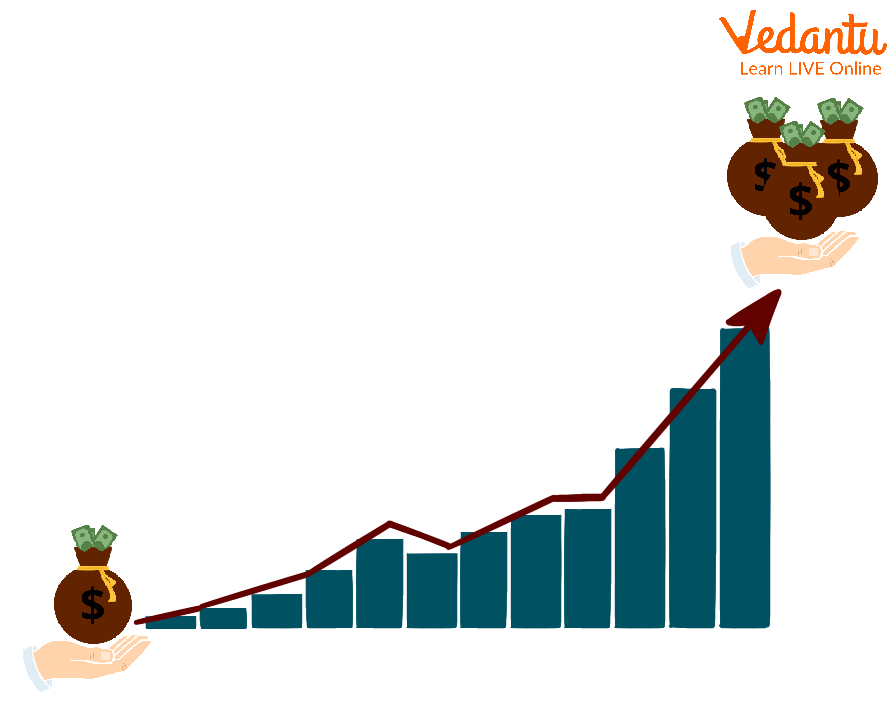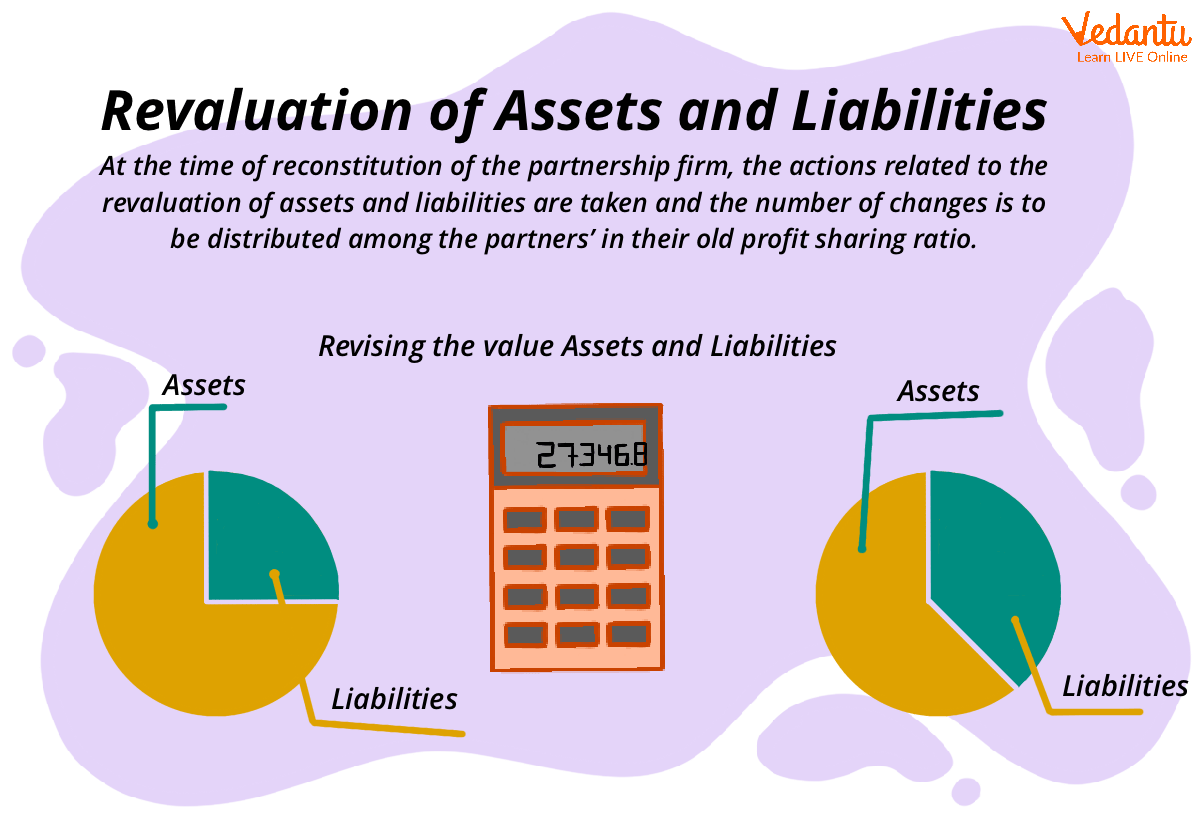




What is Assets Revaluation?

Revaluation of Assets and Liabilities
The term "revaluation of assets" refers to an increase or decrease in the market worth of holdings. When the book value of an asset is less than its current market value, an assessment is usually conducted.
According to the revaluation account meaning, the United States Generally Accepted Accounting Principles (GAAP) require that all fixed assets be recorded at historical costs. Additionally, revaluation of fixed assets accounting treatment at a lower price or fair market value.
Cost should account for the revaluation of fixed assets following International Financial Reporting Standards. Afterwards, businesses may choose between the Cost Model and the Revaluation Model. Inside the cost model, assets are depreciated during their useful lives without adjustments to the carrying value.
The tangible and immovable assets are re-evaluated. The cost of an investment in the fair value model may be changed, based on its fair value, either upwards or downwards. Reserve funds are put aside and given the official designation "Revaluation Reserve" when an asset's value is changed. The calculation of revaluation of assets was credited or debited as appropriate, depending on the direction of the change in asset value. The physical and intangible assets are reassessed in light of current market conditions.
Revaluation of Fixed Assets

Revaluation of Assets and Liabilities
When there is a significant increase or decrease in the fair market value of an asset, its carrying value must be re-evaluated. Under the IFRS framework, revaluation is permitted; however, it is not allowed under US GAAP.
Intangible fixed assets are accounted for using one of two models detailed in International Accounting Standard (IAS) 38 Intangible Assets. In contrast, tangible fixed assets are accounted for using the model described in IAS 16 Property, Plant, and Equipment.
The historical cost of a fixed asset is subtracted from its cumulative depreciation and accumulated impairment losses to determine its carrying value per the cost model. Therefore, the deal does not go higher due to the shifting conditions since there is no adjustment.
Revaluation Method of Depreciation
Fixed asset depreciation may be calculated quickly and easily using the revaluation approach. For determining the depreciation charge, the value of the asset being depreciated is determined at the beginning and end of the year, with any revaluation losses occurring throughout the year included. An internal expert or an independent consulting valuer is often responsible for the appraisal.
Depreciation is often calculated using the revaluation method of depreciation, which contains a depreciation formula for low-value, low-cost, and low-volume fixed assets aggregated for accounting purposes. Due to the complexity and time involved in computing depreciation for each purchase, this technique simplifies the process. Try searching for a revaluation account example for a better understanding.
Solved Example: Journal Entry of Upward Revaluation Reserve
1. According to Axe Ltd.'s latest market analysis, the structure is worth Rs. 200,000. As of the end of the first quarter of 2018, the balance sheet carrying value was Rs. 170,000. Represent the effect in the form of a journal entry.
The entry below represents an upward revaluation of assets, and its journal entry is as follows:
Building a/c Dr. 30,000
To Revaluation Reserve 30,000
Note that the rise in fixed assets' value is not shown in the income statement.
Conclusion
Whether or not to revalue the company's fixed assets is a vital accounting decision because it can significantly impact a number of the company's financial statements. Whether or not to revalue the company's fixed assets is a choice that must be made. Companies that use IFRS are required, as a result of this fact, to carry out the revaluation thoroughly and carefully, even though U.S. GAAP forbids them from doing so.
FAQs on Revaluation of Assets: Easy Steps to Calculate
1. What sets the revaluation method apart from other methods? Is it possible to explain?
When determining the amount of depreciation to be taken off of an asset's value, specific approaches, like the straight-line or decreasing balance method, merely consider the asset's initial cost and the amount of time it is projected to be used. Nevertheless, when using the revaluation account approach, depreciation considers changes inside the asset's worth that occur during the year. Therefore, this approach is beneficial for computing depreciation on items that are low in value or are prone to be broken.
2. How exactly does one determine the value of assets in line with the revaluation approach used?
An experienced individual competent to do so, such as a certified public accountant or an appraiser, should be tasked with assessing the value of the items at issue. This task should be delegated to that person. The value may also be defined by the cost of the product when it was first purchased, the asset's present price worth, and any pertinent criteria. Another possibility is that the answer to the problem may be found by combining all of these elements.
3. What are a few advantages of using the revaluation technique of depreciation, and why is it preferable to other approaches?
The revaluation account format known as depreciation offers a range of benefits, some of which are the following:
It gives a more accurate estimate of the worth of an asset.
Consequently, establishing a more precise relation between revenue and expenses is made possible as nothing more than a result.
Compared to completing identical activities utilising the other techniques, putting this plan into action will be a far easier effort.
4. To calculate depreciation, using the revaluation approach presents various challenges; what are a few of these challenges?
Using depreciation as a method for revaluation comes with several downsides, some of which are as follows:
It is possible that it will be more challenging to evaluate assets accurately.
Second, this strategy may be unsuitable for either more extensive or expensive purchases.
Third, it's possible that the depreciation expense doesn't accurately reflect how much the worth of the support has changed.
Finally, it's possible that the approach may not faithfully represent the worth of the assets as they have changed over time.





















